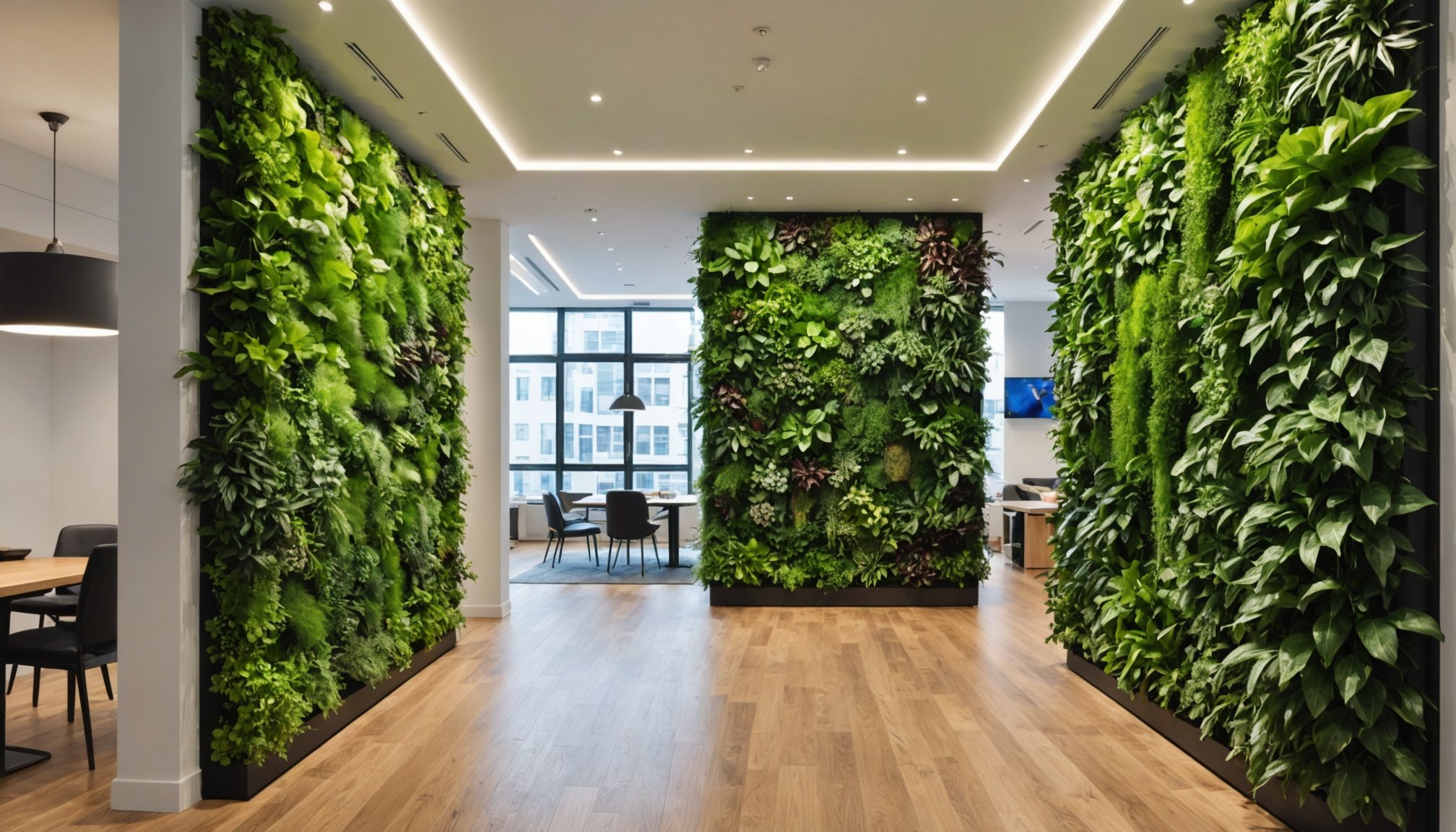Overview of Indoor Vertical Gardens
Indoor vertical gardens are a savvy solution to urban gardening challenges, offering a lush, green space without consuming significant floor area. These gardens are essentially plants grown on vertically inclined surfaces, often integrated within homes or office settings. Historically, the practice of vertical gardening dates back to ancient hanging gardens, but in modern contexts, its evolution signals a significant shift towards sustainable and space-efficient gardening methods.
The popularity of indoor vertical gardens is currently soaring within urban areas, spurred by the increasing desire for green spaces to combat urban sprawl. Vertical gardening allows city dwellers to embrace nature while staying within the confines of limited space. With benefits of vertical gardening ranging from aesthetic enhancement to promoting biodiversity, this approach appeals to environmentally conscious individuals seeking innovative gardening methods.
Also to discover : Enhancing Vegan B12: Daily Nutritional Yeast’s Role in Elevating Vitamin Levels
In recent years, technological advancements have further fueled this trend, introducing smart irrigation systems and modular designs. These innovations make vertical gardening more accessible and maintainable for the average urban dweller. In essence, indoor vertical gardens represent a blend of nature and urbanization, providing city inhabitants with an opportunity to cultivate greenery in their personal spaces.
Impact on Urban Air Quality
Indoor vertical gardens can significantly contribute to air quality improvement in urban environments. Plants, through photosynthesis, remove carbon dioxide and release oxygen, playing a crucial role in air purification. They absorb pollutants, transforming urban spaces into more livable environments.
Topic to read : Enhance your health: top superfood supplements to try
Mechanisms of Air Purification
Plants purify air by absorbing particulates and volatile organic compounds (VOCs) through their stomata. These plants effectively target pollutants common in urban areas, including benzene, formaldehyde, and trichloroethylene. They also increase humidity, which can deter the spread of certain airborne microbes.
Scientific Validation and Statistics
Research by NASA demonstrated the efficacy of indoor plants in pollution reduction. For instance, a study pointed out that plants reduce indoor air toxins by up to 87% in 24 hours. This underscores the transformative potential of plants in urban environments.
Urban Benefits
Statistics reveal significant improvements in cities encouraging vertical gardening. Some urban areas have noted up to a 25% decrease in air pollutants with wide adoption of vertical green spaces. Incorporating indoor vertical gardens can thus offer a practical solution to combat urban air quality issues, adding a layer of natural defence against pollution.
Benefits to Mental Well-being
Indoor vertical gardens are not only visually appealing but also play a significant role in enhancing mental health. The presence of greenery in a living or work environment has been shown to reduce stress levels and promote a sense of calm. This is particularly important in urban settings, where the hustle and bustle can often lead to heightened anxiety.
Numerous studies have illustrated the psychological benefits of plants, highlighting their capacity to boost mood and focus. A study in the “Journal of Environmental Psychology” suggests that viewing indoor greenery can lead to improved attention and reduced symptoms of depression. Meanwhile, individuals often report a subjective sense of peace and well-being in environments enriched with plants.
Moreover, indoor vertical gardens contribute to stress reduction by offering a refuge from the urban chaos. They can dramatically transform sterile office spaces into vibrant, tranquil areas. As plants actively engage our senses, they inadvertently create environments conducive to productivity and creativity. Thus, urban dwellers can find a balance between work and relaxation through strategically integrated green spaces.
By merging the benefits of nature with practicality, these gardens provide an effective solution for improving both the psychological ambiance and general well-being in urban environments.
Practical Tips for Implementing Indoor Vertical Gardens
Implementing indoor vertical gardens demands careful planning and informed decisions to thrive in urban settings. First, selecting suitable plants is crucial. Choose varieties like ferns and pothos known for their adaptability and air-purifying qualities. They flourish in vertical settings and are low-maintenance, making them ideal for beginners in urban gardening.
When designing your garden, consider the layout and lighting conditions. Vertical gardens can be as simple as wall-mounted planters or as intricate as full-scale wall systems. Ensure your plants receive adequate light, preferably indirect or artificial using grow lights. Spatial arrangement and aesthetic design play vital roles in maximizing visual impact and promoting plant growth.
For vertical garden installation, easy-to-maintain structures such as modular panels or pockets are recommended. These methods allow rearranging and customizing plant displays effortlessly.
Proper maintenance ensures the vitality of your garden. Regular watering, pruning, and monitoring for pests are essential routines. Employ automated irrigation systems for consistent hydration, especially in compact urban living spaces.
By considering these urban gardening solutions, you can create a flourishing vertical garden that not only enhances aesthetic appeal but also contributes to a healthier living environment.
Case Studies and Expert Opinions
Examining real-life examples of successful indoor vertical gardens offers valuable insights. In Stockholm, a high-rise apartment features an elaborate vertical garden in the atrium, enhancing natural light and promoting biodiversity. Such initiatives demonstrate the transformative potential of vertical gardening methods in urban settings.
Experts in horticulture and urban design provide crucial insights into vertical gardening strategies. Dr. Jane Smith, a renowned botanist, highlights the importance of selecting resilient plant species suited for vertical growth. Her work emphasizes that choosing easy-to-maintain plants ensures successful vertical gardens.
A comparison of diverse vertical gardening techniques reveals unique benefits. Hydroponic systems, for example, allow efficient water use, appealing to drought-prone areas. Wall modules, on the other hand, offer modular and customizable configurations. Each method has specific advantages, requiring careful planning to match the urban environment.
Quotes from horticulture specialists underscore the importance of integrating nature into urban spaces. Experts agree on the positive impact of urban gardening on both personal well-being and city aesthetics. With the right approach, vertical gardens can substantially contribute to urban sustainability, offering a sanctuary amid bustling city life.
Resources for Further Reading
Exploring further into vertical gardening can provide invaluable insights for both amateurs and seasoned enthusiasts seeking to deepen their understanding. Numerous gardening resources offer comprehensive guides on building and maintaining vertical gardens. Books such as “The Vertical Garden: From Nature to the City” provide a detailed look into the art and practicality of vertical planting.
For a more interactive learning experience, several online platforms and communities exist where urban gardeners share tips, challenges, and successes. Websites like Urban Garden Magazine feature forums and articles where gardening enthusiasts can exchange ideas and gain inspiration.
For those interested in the sustainability aspect of urban gardening, various publications offer scientific studies and sustainability guides. The journal “Environmental Science & Technology” provides detailed studies on the environmental impact of such gardens, contributing to a broader understanding of their role in ecological conservation.
Engaging with these resources not only equips individuals with practical knowledge but also connects them with like-minded communities, fostering a culture of shared knowledge and support in the realm of urban gardening. Such well-rounded approaches ensure sustainable and innovative gardening practices continue to evolve and thrive.









